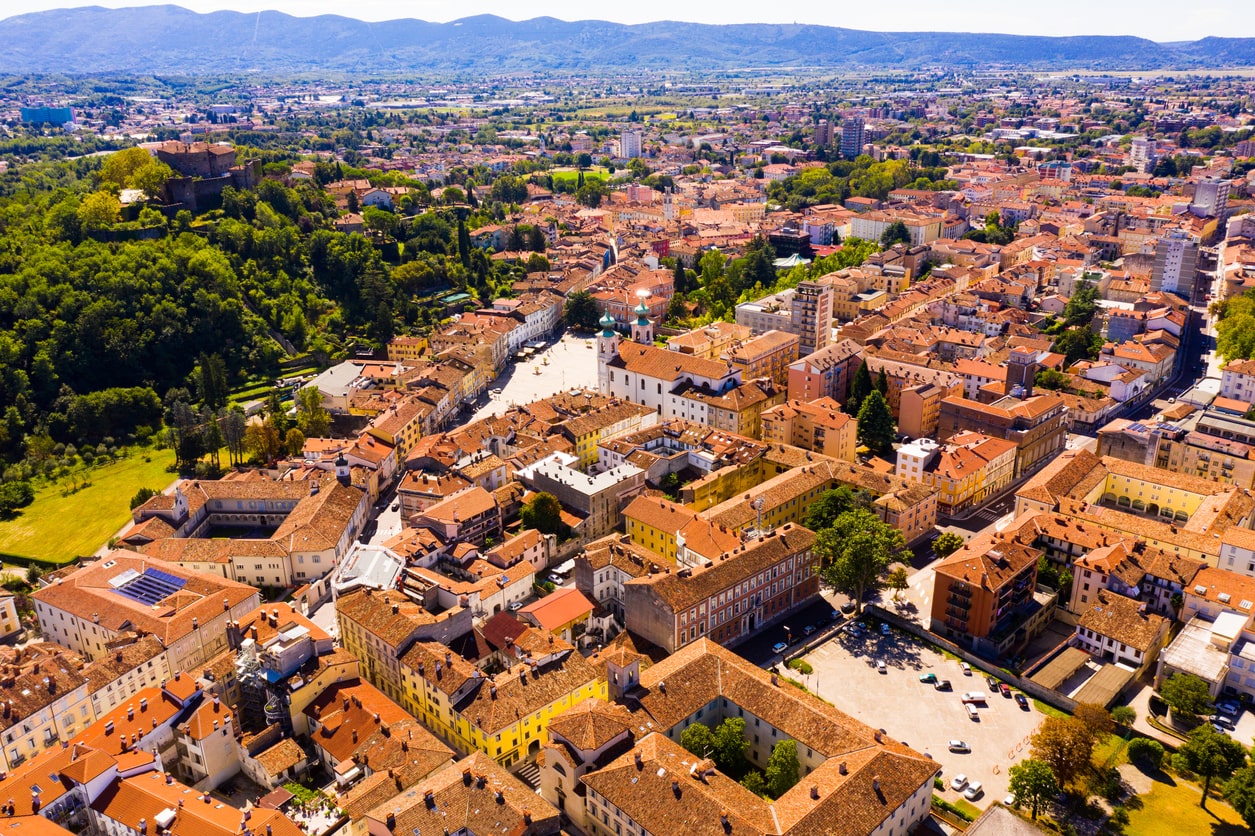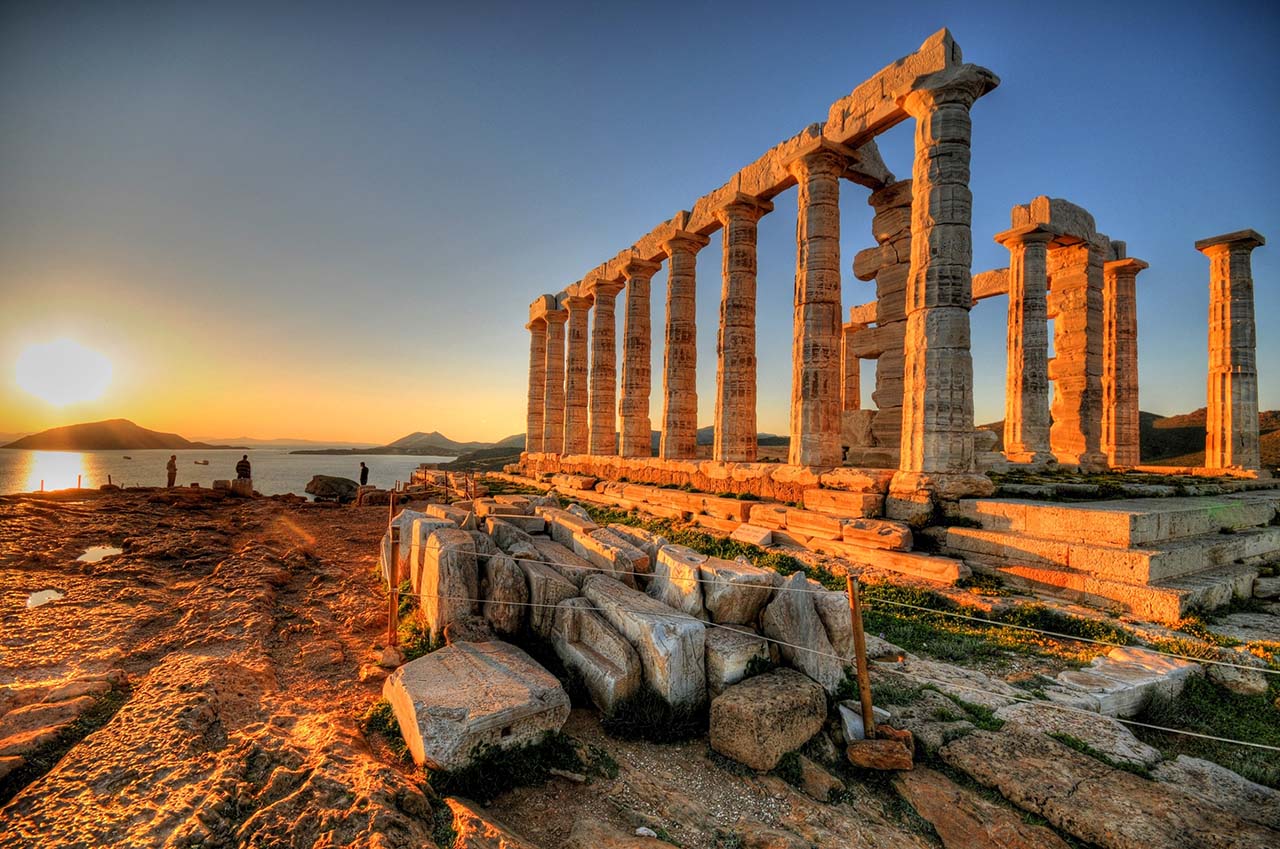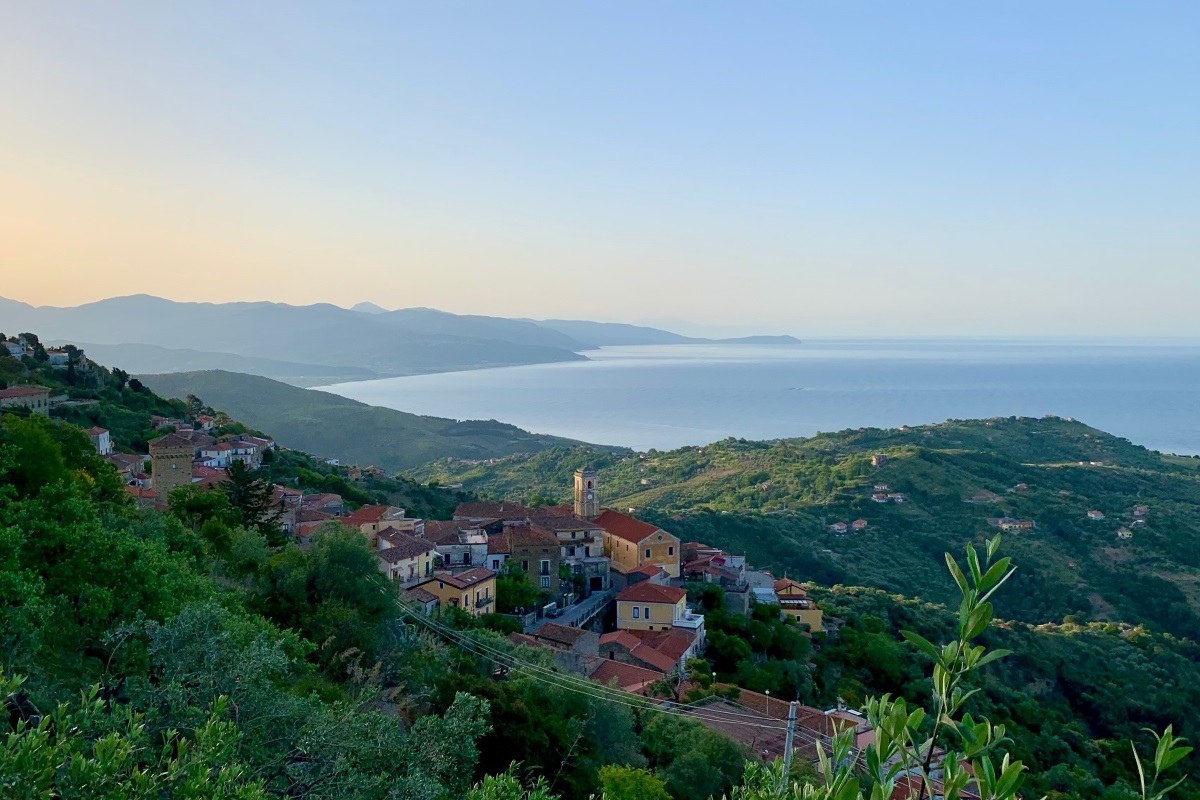Inside the Palace, fifteen rooms make up the museum itinerary, rich in history and art, including original furniture, silverware, porcelain, crystal, paintings and sculptures.


Transalpine Square
The place in front of the Transalpina line stationcreated to connect Vienna to Trieste and inaugurated in 1906, is the emblem of Gorizia and Nova Gorica, European Capital of Culture 2025.
It was here that the border between Italy and Slovenia was drawn, this wall half a meter high and topped with a metal trellis, which divided the square and Gorizia in two: the historic center remained with the Italy, the outlying districts and the railway station were assigned to Yugoslavia.
Today, in memory of the wall demolished in 2004 with Slovenia's entry into the European Union, there remains a metal plaque on which the line separating the two countries is drawn, so that one can literally stand with one foot in Italy and one in Slovenia.
Covered market
This Art Nouveau architecture from the 1920s between Via Boccaccio and Corso Verdi is a destination not to be missed to know the rich local gastronomy and wine, among the fruit and vegetable stalls presenting zero km products and typical local products, including the highly sought-after radicchio Rose of Goriziafishmongers, Collio wines, honey, jams, cheeses.


Museums of Gorizia
Gorizia Great War Museum
Housed in the evocative 16th century underground rooms Dornberg and Tasso houses In Borgo Castello there is one of the main museums in Italy dedicated to the First World War. Particularly the events of the Isonzo front and the situation in Gorizia, a city deeply affected by the bombings.
The rooms exhibit weapons, uniforms and objects from the daily life of soldiers which, with the life-size reproduction of a trench and the recording of the deafening noises of battles, well describe the dramatic reality of the front (museograndeguerra.regione. fvg.it).
Museum of Fashion and Applied Arts
Among the houses of Dornberg, Tasso and Formentini, clothing and accessories are on display covering a period between the 18th and 20th centuries.
Particularly interesting is the section dedicated to the processing and weaving of silk, an activity which was of great importance in the region of Gorizia, especially in the 18th century, thanks to the impetus given by the emperors Maria Theresa and Joseph II .
In this section is a monumental circular silk-twisting machine dating from the 18th century (museomoda.regione.fvg.it).
Attems Petzenstein Palace
It is located in the historic center, near Piazza della Vittoria, and is one of the most elegant buildings in the city: completed in its Rococo style in 1750, with rooms decorated with frescoes and stuccoes, Attems Petzenstein Palace today it houses the Pinacoteca of the Provincial Museums of Gorizia, whose collections extend from the 18th to the 20th century.
Luigi Spazzapan Regional Contemporary Art Gallery
Here we discover the most important collection of works by the painter Luigi Spazzapan (Gradisca d'Isonzo 1889 – Turin 1958), among the protagonists of Italian art of the first half of the 20th century.
Coming from the collection of Eugenio Giletti, Turin collector and great friend of Spazzapan, the eighty-seven works document all the phases of the artist: from his youthful expressionist works to those of the last period when he reached the Informal.
In addition to Spazzapan's works, the Gallery maintains an important collection of contemporary regional artists.


Mount Sabotino and the Path of Peace
Theater of battles on the Isonzo front during the First World War, the Mount Sabotino a few kilometers north of Gorizia, it is a hiking destination and a landscape of great natural beauty.
But above all it is an open-air cross-border museum between Italy and Slovenia with trails that lead to the discovery of the system of trenches, tunnels and combat positions built by Austro-Hungarian soldiers to repel Italian attacks, until the 6th century. Battle of Isonzo, when, in 1916, the Italian army managed to conquer the mountain, with one of the most important victories on this front (visitsabotin.si).
THE Sabotin, as it is called in Slovene, it is part of the Path of peace from the Alps to the Adriatica route of more than 500 km between Italy and Slovenia, which brings together in a single itinerary around 300 historical heritage sites from the Great War. From the Julian Alps to Brda/Collio, through the Vipava Valley, the Gorizia region and the Karst to the Adriatic Sea.
Besides Mount Sabotino, other fundamental stages of the historical routes of the Gorizia region are the Monte Calvario, the ossuary of Oslavia, the sanctuary of Redipuglia.
More information on:go2025.eu; tourismfvg.it




